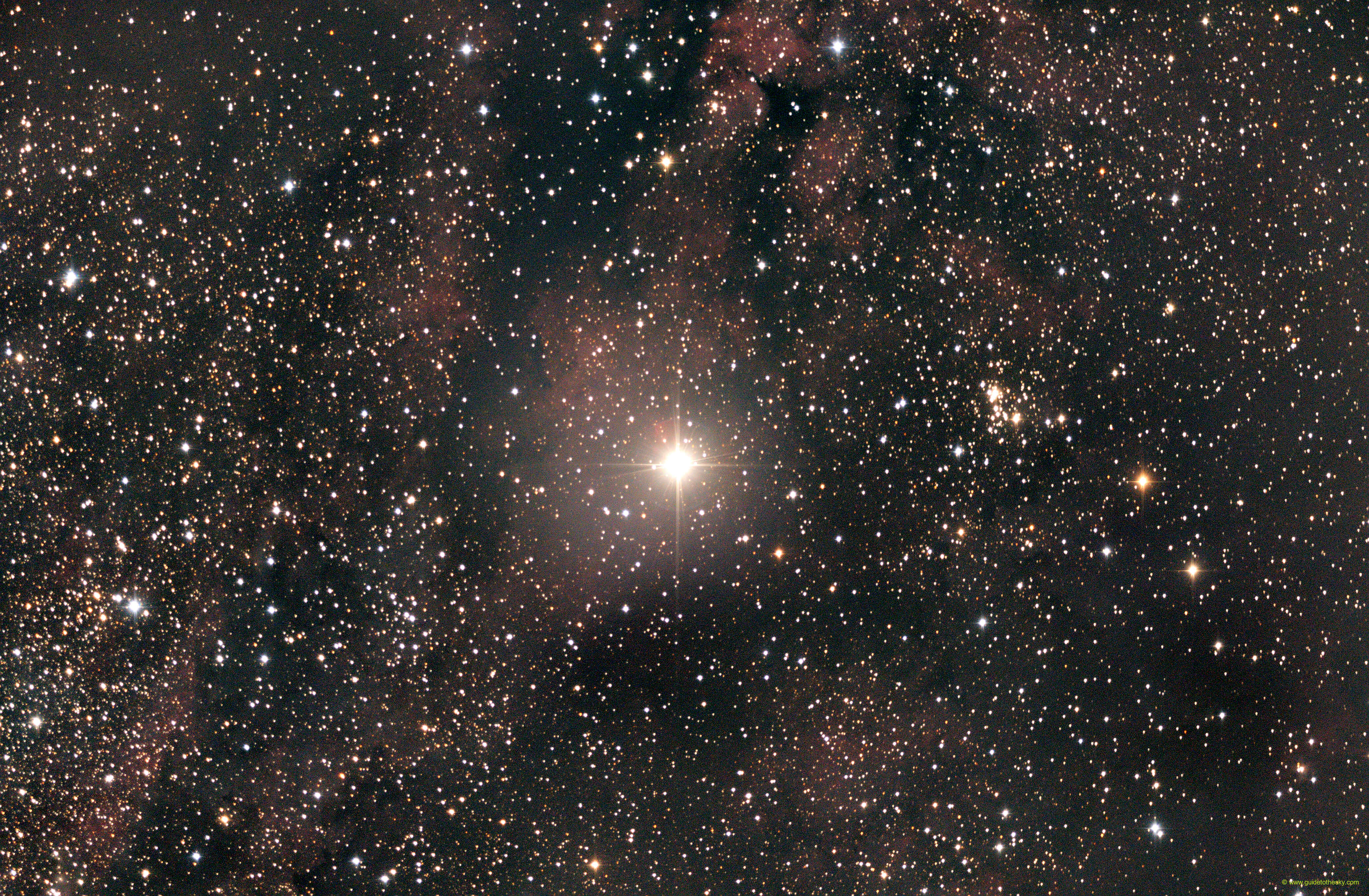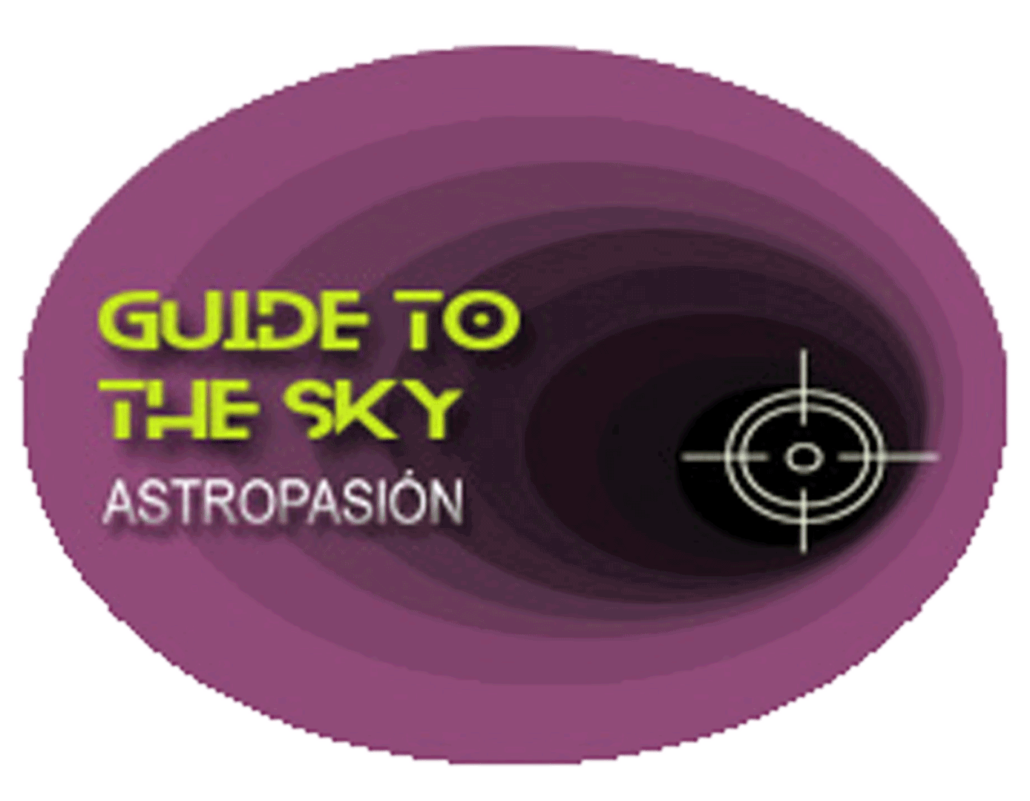IC1318 - Cygnus
Nebulosa de Sadir

Exp: 1h 40m 49s
Siempre que apunté mis primáticos hacia la estrella Sadir, γ Cygnus, la que marca el centro de la cruz que forma la Constelación del Cisne, observé una innumerable cantidad de estrellas rodeando a la propia Sadir, incluso algunas de ellas parecían formar un círculo rodeando a la estrella.
Hoy, gracias a la astrofotografia de ancho campo, podemos observar la nebulosa o el complejo de nebulosas que conforman IC 1318 y que rodean a esta estrella, además del notable cúmulo abierto NGC 6910.
Es inconfundible una brecha oscura que parece romper en dos todo el conjunto.Y por supuesto el predominio de γ Cygnus.
IC 1318 brilla desde {{ object[0].IC1318.mesDistances[0].dist }} {{ object[0].IC1318.mesDistances[0].unit }} de distancia .
Hoy, gracias a la astrofotografia de ancho campo, podemos observar la nebulosa o el complejo de nebulosas que conforman IC 1318 y que rodean a esta estrella, además del notable cúmulo abierto NGC 6910.
Es inconfundible una brecha oscura que parece romper en dos todo el conjunto.Y por supuesto el predominio de γ Cygnus.
IC 1318 brilla desde {{ object[0].IC1318.mesDistances[0].dist }} {{ object[0].IC1318.mesDistances[0].unit }} de distancia .
IC1318 - Nebulosa de Sadir - en la IA
IC 1318, also known as the Gamma Cygni Nebula or the Sadr Region, is a large, diffuse emission nebula located in the constellation Cygnus. Here's a breakdown of what makes it interesting:
Key Features:
- Location: Cygnus, the Swan. It's centered around the bright star Sadr (Gamma Cygni).
- Type: Emission Nebula. It glows because it's a cloud of interstellar gas and dust ionized by radiation from hot, young stars, primarily Sadr itself (though Sadr is technically in the foreground, not within the nebula causing the ionization).
- Appearance: It's a complex and beautiful region, with dark lanes of dust and bright regions of glowing gas. Visually, it often appears as a large, reddish cloud in long-exposure photographs. The nebula is often described as resembling a butterfly or a sideways jellyfish.
- Size: Spans a large area of the sky, several times the diameter of the full moon.
- Distance: Estimated to be around 4,900 light-years away.
Sadr (Gamma Cygni):
- This bright, white-yellow supergiant star sits near the center of the nebula.
- While it appears to be the source of the nebula's illumination, Sadr is actually closer to us (estimated around 1,800 light-years) and is likely not directly responsible for ionizing the entire nebula. It likely illuminates the foreground portions of the nebula.
- The ionizing source is more likely a cluster of hot, massive stars embedded within the larger IC 1318 complex.
What Makes it Interesting for Astronomers:
- Star Formation: IC 1318 is an active region of star formation. The dust lanes are collapsing under gravity, leading to the birth of new stars.
- HII Region: It's a classic example of an HII region. This means it's a region of ionized hydrogen gas, which emits light at specific wavelengths (like H-alpha), giving it its characteristic reddish glow.
- Complex Structure: The interaction between the radiation from the stars and the surrounding gas and dust creates intricate patterns and shapes within the nebula.
- Studying Stellar Evolution: By studying the stars and gas in IC 1318, astronomers can learn more about the processes of star birth, stellar evolution, and the interaction between stars and their environment.
How to Observe/Image IC 1318:
- Visually: It's very faint visually and requires a large telescope and dark skies to see any details beyond the general glow.
- Astrophotography: It's a popular target for astrophotographers. Narrowband filters (especially H-alpha) are very effective at bringing out the nebula's detail. Wide-field telescopes are well-suited to capturing the entire region.
- Binoculars: Wide-field binoculars can reveal a faint glow around Sadr under dark skies.
In Summary: IC 1318 is a magnificent example of a star-forming region, showcasing the beauty and complexity of the interstellar medium. Its bright emission, intricate structure, and association with the prominent star Sadr make it a popular target for both amateur and professional astronomers.
Más información sobre IC1318 en NASA/IPAC.
Mapa alrededor de IC1318
Otros identificadores de IC1318:
"IC 1318" ,"NAME gam Cyg Nebula",

